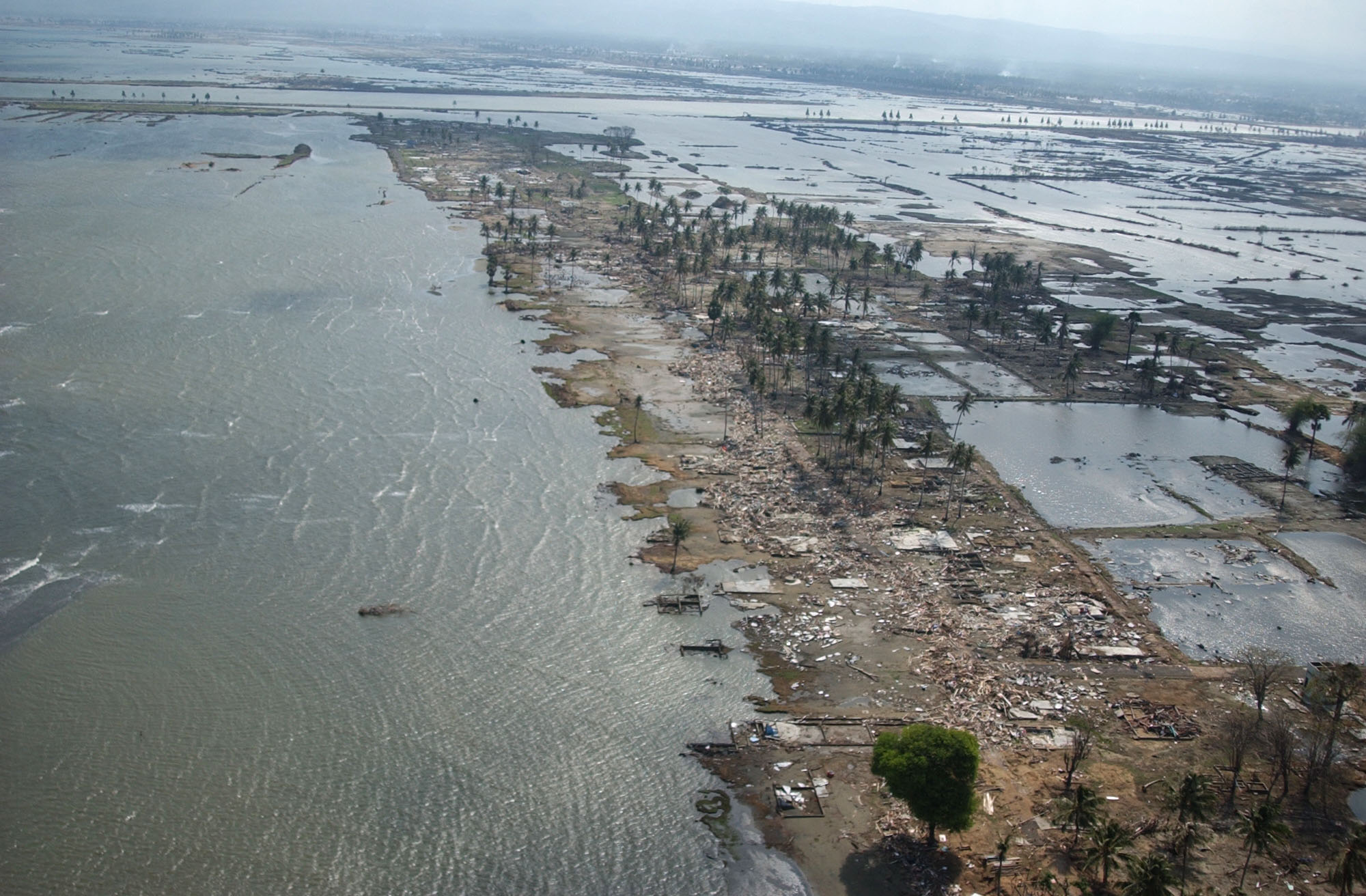Partnerships in Disaster Relief – What Is Southeast Asia Expecting?
Southeast Asian countries have established a well-functioning regional structure for disaster relief since the devastating Indian Ocean tsunami in 2004, evident in their collective responses to the dam collapse in Laos and the earthquake and tsunami in Indonesia in 2018, as well as Typhoon Mocha in Myanmar earlier this year.
Cooperation with external partner countries has been indispensable to such progress in the region. The worsening climate crisis, which increases the demand for disaster relief, raises new questions about how the region’s disaster relief cooperation with external powers will evolve, and what it is expecting from its external partners.
Disaster relief and security cooperation in Southeast Asia
Disaster relief in Southeast Asia serves both strategic and functional purposes. From a strategic perspective, disaster relief cooperation — often considered “low-hanging fruit” due to its benign nature and low sensitivity — facilitates Southeast Asia’s endeavors to manage relations with external powers from a position of relative weakness while maintaining its centrality in regional security.
For example, the Association of Southeast Asian Nations (ASEAN) initiated security engagement with China through the ASEAN Regional Forum (ARF) in the late 1990s, and disaster relief was one area of cooperation. This strategic thinking is also reflected in the ASEAN Political-Security Community Blueprint 2025, which identifies humanitarian assistance and disaster relief (HADR) cooperation as a pathway to enhance ASEAN’s centrality in the ASEAN Defence Ministers Meeting (ADMM)-Plus. The institutional design of both ARF and ADMM-Plus ensures that ASEAN leads the agenda setting and operations of these mechanisms, maintaining its centrality.
Southeast Asia also recognizes the functional value of disaster relief cooperation. Given that natural disasters are a major security threat in the region, effective disaster relief constitutes a core component of ASEAN’s vision to build a secure region. Since the 2004 tsunami, ASEAN has established a set of entities to achieve the goal, including the ASEAN Committee on Disaster Management (ACDM) and the ASEAN Coordinating Centre for Humanitarian Assistance on Disaster Management (AHA Centre).
These entities serve as focal points for external powers to engage in ASEAN policymaking and relief operations. Japan is the largest funding partner of the AHA Centre, contributing over $40 million between 2011 and 2021. In 2021, ASEAN established ACDM Plus mechanisms with China, Japan and South Korea to strengthen cooperation on disaster issues. Such partnerships allow ASEAN and its member states to draw on the expertise, perspectives and resources of external powers, enhancing national and regional capacity to deal with disasters.
Southeast Asia’s expectations for disaster-related partnerships
Continuity and certainty are crucial for stable and lasting partnerships between Southeast Asia and external powers. Due to alliances or close security partnerships with several Southeast Asian countries, the United States has consistently been a leading provider of HADR. Japan’s financial support for the AHA Centre comes from the Japan-ASEAN Integration Fund, established in 2006 partly to support cooperation on disaster management and humanitarian assistance. This fund demonstrates Japan’s enduring commitment to the partnership. In comparison to ad hoc cooperation, these formalized mechanisms provide certainty in cooperation between Southeast Asia and its partners.
Complementarity is another factor. Over two decades, ASEAN has gained valuable experience in disaster relief cooperation and engaged all major external powers in the Asia-Pacific. With the U.K. recently becoming ASEAN’s dialogue partner, and France in discussions with the regional grouping about this status, the region is likely to see more disaster-related partnerships emerging. Moving forward, these partnerships must complement each other and align with ASEAN’s own vision for disaster management.
ASEAN continues to depend on partners to finance its disaster-related activities. For instance, more than half of the AHA Centre’s annual budget in 2020 was provided by external partners. In addition to providing direct funding support, external partners should cooperate with Southeast Asia to explore innovative ways of financing, strengthening the region’s financial independence and sustainability.
The need for cooperation in capacity building is growing due to climate change and the evolving domestic political environment in Southeast Asian countries. Climate-induced shifts in disaster patterns and the operational landscape of disaster relief require new skills, capabilities and technologies. Growing nationalistic sentiment in Southeast Asian countries makes it more difficult for foreign countries to deploy relief staff on the ground after disasters. Alternatively, capacity building is a more convenient avenue for external partners to keep working with Southeast Asian countries on disaster issues.
Disaster relief will continue to be an important area for security cooperation in Southeast Asia, given the region’s vulnerability to disasters and its economic and strategic importance to major powers. While serving the strategic interests of both the region and external powers, cooperation should align with the region’s vision for disaster management, such as through strengthening financing and the use of technology, further improving the effectiveness of disaster relief in the region.
About the Author
Lina Gong, PhD, is a Research Fellow in the Humanitarian Assistance and Disaster Relief (HADR) Programme of the Centre for Non-Traditional Security Studies, S. Rajaratnam School of International Studies (RSIS), Nanyang Technological University. She has recently worked on regional cooperation in HADR in the Indo-Pacific region.
Disclaimer: The opinions articulated above represent the views of the author(s) and do not necessarily reflect the position of the Asia Pacific Leadership Network or any of its members. APLN’s website is a source of authoritative research and analysis and serves as a platform for debate and discussion among our senior network members, experts, and practitioners, as well as the next generation of policymakers, analysts, and advocates. Comments and responses can be emailed to apln@apln.network.
Image: Banda Aceh, Sumatra, Indonesia, Feb. 12, 2005 – six weeks after the tsunami hit Banda Aceh on the island of Sumatra, Indonesia (Jon Gesch, United States Navy)
This article was published in The Korea Times on 22 November 2023 as part of a dedicated, regular Korea Times column with analysis by APLN members on global issues. You can find the original post here.

